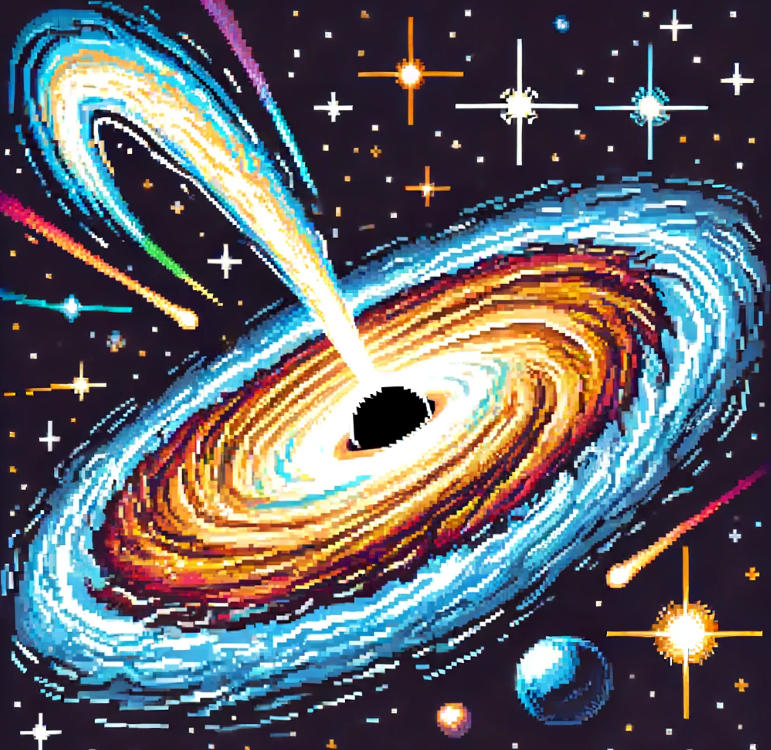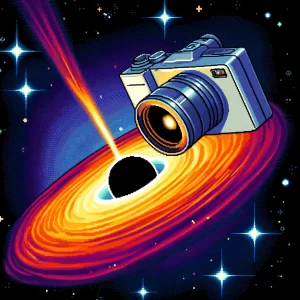
The Power of Supermassive Black Holes
In the vast cosmos, supermassive black holes exert a powerful influence on their surroundings, shaping the evolution of galaxies. One recent study has shed light on this phenomenon by examining the galaxy COSMOS-11142 using the James Webb Space Telescope (JWST). This research provides compelling evidence that supermassive black holes can rapidly quench star formation in massive galaxies by ejecting vast amounts of neutral gas.
The Galaxy COSMOS-11142
COSMOS-11142 is a massive galaxy located at a redshift of 2.445, meaning we see it as it was about 11 billion years ago. This galaxy was observed as part of the Blue Jay survey, a JWST program that targeted around 150 galaxies to study their properties. COSMOS-11142 stands out because it is in the process of quenching its star formation, transitioning from a phase of intense star formation to a more quiescent state.
The Role of Supermassive Black Holes
Supermassive black holes are known to influence their host galaxies in various ways. One significant impact is through the ejection of gas, which can prevent the formation of new stars. In COSMOS-11142, researchers detected a weak outflow of ionized gas and a powerful outflow of neutral gas. The latter is particularly important because neutral gas is a primary ingredient for star formation. By expelling this gas, the supermassive black hole effectively halts the creation of new stars.
Observations and Findings
Using JWST’s Near Infrared Spectrograph (NIRSpec), the team observed the galaxy’s spectrum, which revealed several key features:
- Ionized Gas Emission Lines: The presence of lines such as [O II], [O III], and Hα indicated the presence of ionized gas in the galaxy.
- Neutral Gas Absorption Lines: The absorption lines of calcium and sodium revealed a substantial amount of neutral gas being expelled from the galaxy.
By analyzing these spectral lines, the researchers were able to determine the velocities and masses of the outflowing gas. They found that the neutral gas was being ejected at a rate sufficient to quench star formation in COSMOS-11142.
Significance of the Study
This study provides direct observational evidence that supermassive black holes can drive powerful outflows of neutral gas, leading to the rapid quenching of star formation. This finding is significant because it helps explain why massive galaxies in the early universe stopped forming stars so quickly. The ability of supermassive black holes to expel neutral gas is a critical factor in the evolution of galaxies.
The Mechanism of Gas Ejection
The exact mechanism by which supermassive black holes eject gas is complex and involves several factors:
- Accretion Disk Winds: The intense gravitational pull of the black hole generates winds from the accretion disk, pushing gas outward.
- Radiation Pressure: The immense energy output from the black hole can exert pressure on the surrounding gas, driving it away.
- Jets: Some black holes produce powerful jets that can transport gas far from the galaxy’s core.
In COSMOS-11142, the researchers detected blueshifted lines in both ionized and neutral gas, indicating that gas was moving away from the galaxy at high speeds. This outflow is likely driven by the processes mentioned above, although the precise contribution of each mechanism remains an area of active research.
Broader Implications
The discovery that supermassive black holes can rapidly quench star formation has broader implications for our understanding of galaxy evolution. It suggests that black holes play a more active role in shaping galaxies than previously thought. This finding also has implications for models of galaxy formation and evolution, which must now account for the significant impact of black hole-driven gas ejection.
Conclusion
The study of COSMOS-11142 provides a fascinating glimpse into the dynamic processes that govern galaxy evolution. By demonstrating that supermassive black holes can eject neutral gas and halt star formation, this research highlights the profound influence these cosmic giants have on their surroundings. As we continue to explore the universe with powerful tools like the JWST, we can expect to uncover more secrets about the complex interplay between black holes and their host galaxies.
Explore and Learn with Science:
Dive into groundbreaking research and inspiring stories with ‘This Week in Science’! Perfect for teachers and science enthusiasts, our free weekly newsletter expands your horizons in teaching and learning. Join us today and reshape your engagement with science.
About the Author
Dr. Jonathan P. Scaccia, PhD, is a clinical-community psychologist with expertise in public health science and practice. He has led evaluation and research initiatives focusing on health equity, vaccine distribution, and organizational readiness. Dr. Scaccia has contributed to federal suicide prevention programs and vaccine equity strategies. Recognized with awards for his impactful work, he is a leading voice in advancing public health practices.



